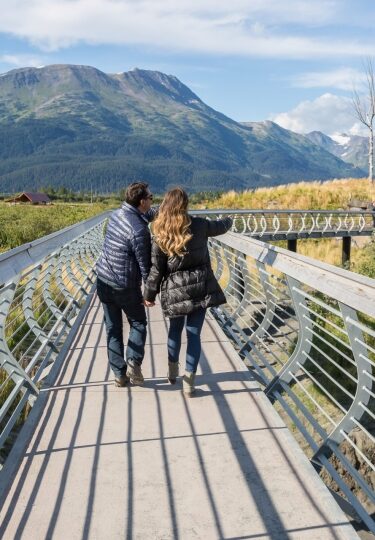During fall in Alaska, cooler temperatures begin to arrive, the trees change their colors, and migratory birds take to the skies. The last phase of the berry-picking season, as well as the final salmon spawning runs are taking place. The first snow dusts the mountains and you may even get a glimpse of the Aurora Borealis after dark.
Visit Alaska in autumn and you’ll sense change in the air as one season shifts to another. This is a beautiful time of year to travel here, as animals adapt their behavior to prepare for winter, or migrate to warmer climates.
Whether you see Alaska swathed in an ethereal autumnal mist, or glowing in the late season sunshine, this untamed wilderness will fuel your exploratory spirit.
See the Colors of Tongass National Forest
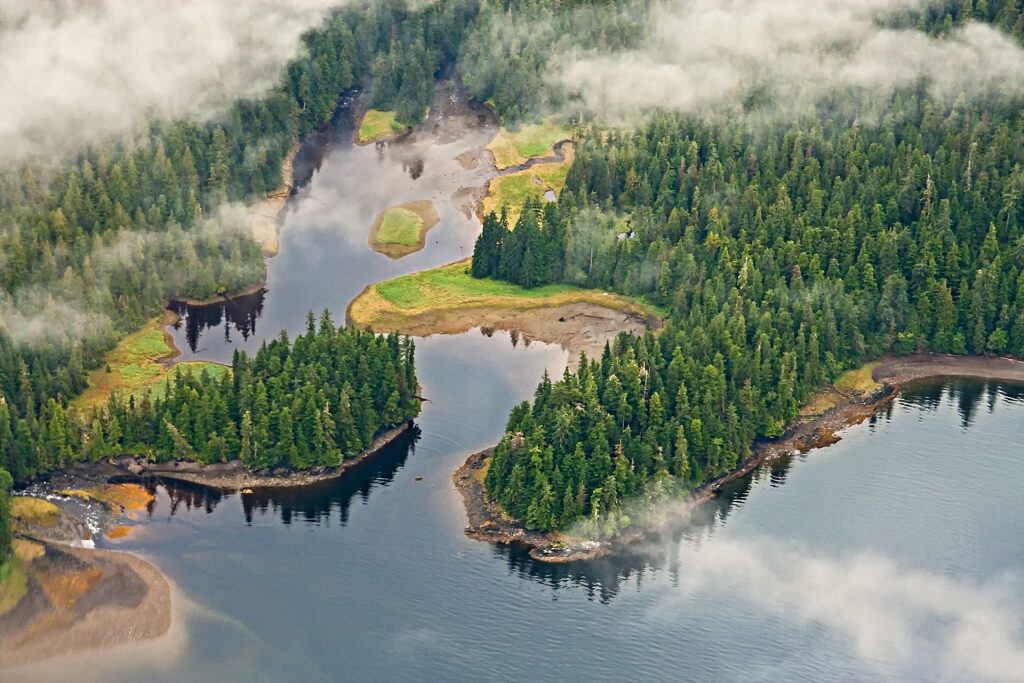
Tongass National Forest
Alaska is one of the best places to visit in the fall. No trip here would be complete without a trek or paddle in the vast Tongass National Forest for fishing, glacier viewing, and spotting wild animals in their natural habitats.
In fall, the deciduous trees turn dazzling shades of yellow and scarlet, making this an especially beautiful time to visit.
Tongass happens to be the largest national forest in the entire United States. These protected islands and the forested mainland sections, just to the north of Ketchikan, cover nearly 17 million acres.
The park boasts exceptionally diverse landscapes, including old-growth rainforests, alpine meadows, glaciers, and weathered coastlines.
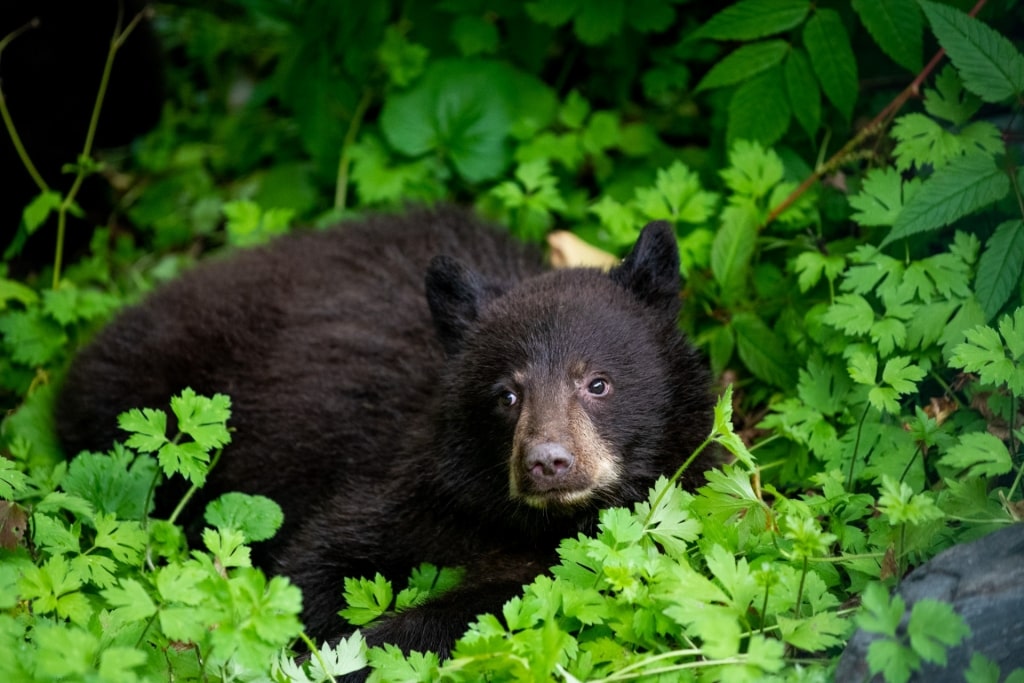
Bear
The forests and waters in this area serve as vital habitats for a diverse range of wildlife that Alaska is known for. It’s a sanctuary where bears, Canadian lynxes, eagles, foxes, gray wolves, moose, orcas, river otters, and an array of salmon species thrive.
Fall is still a good time to go hiking, or join a boat trip to explore the rocky coastline. Your guide will help you look for black bears, bald eagles, seals, whales, and other marine and land-based creatures in their natural habitats. You’ll also learn about how these animals prepare for Alaska’s harsh winters.
Discover Ketchikan
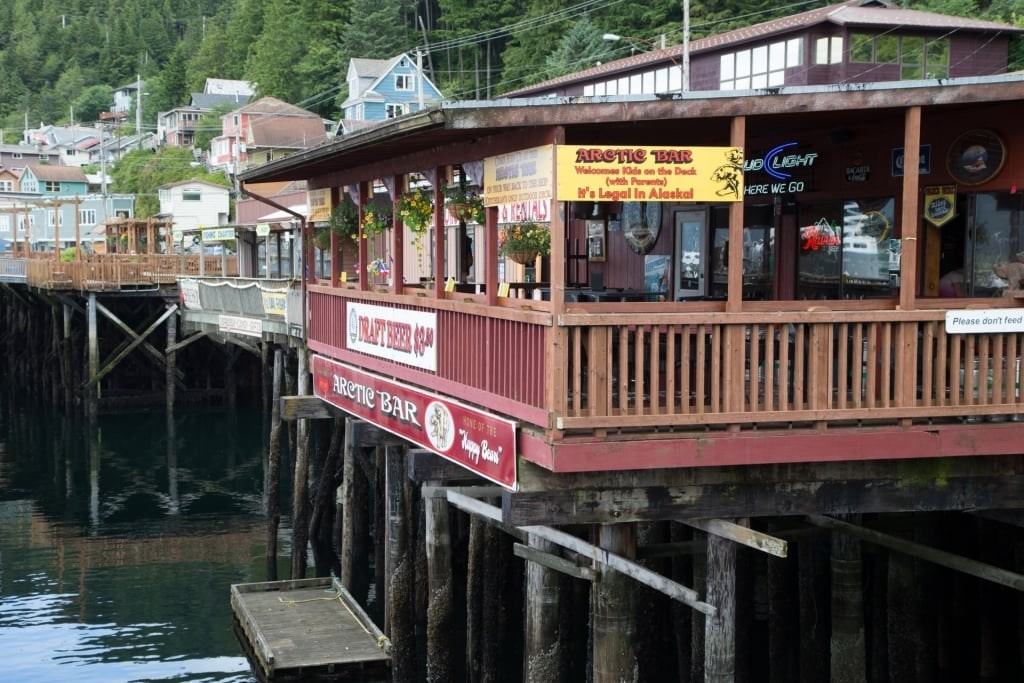
Ketchikan
Pretty Ketchikan, located in the southeast corner of the state at the top of the Inside Passage, is a joy at any time of year, but in fall, it has additional charms.
Ketchikan bills itself as “Salmon Capital of the World” and while the main salmon runs occur in summer, autumn in Alaska is prime silver (coho) salmon fishing season.
Sign up for guided wrangling adventures out of Ketchikan and chase these magnificent fish as they return to the local rivers and creeks to spawn.
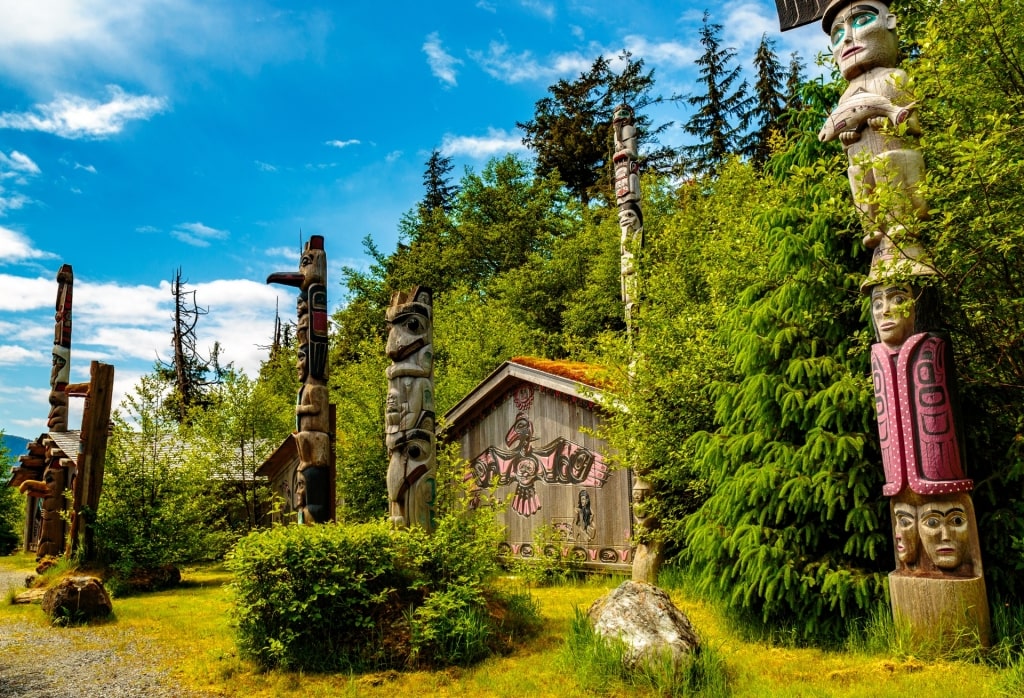
Totem Bight State Historical Park, Ketchikan
You can also drop by the Totem Bight State Historical Park or Saxman Native Village to learn more about Alaska’s Native American cultures, art history, and the significance of indigenous people’s totem poles. The colorful poles look especially vibrant against a backdrop of trees in shades of scarlet and gold.
While you’re in downtown Ketchikan, get chatting to the locals. Wander around Creek Street, a historic district that has now been transformed into a delightful little walkway.
Lined with colorful buildings, this stilt-mounted boardwalk by the water, once the town’s red light district, is one of the best places to visit in Alaska, featuring small shops and galleries.
Come at the end of the season and you’ll have a sense of locals preparing for the long winter. Many shut up shop when the last visitors have left and head off to other seasonal jobs.
Others hunker down for the long, cold winter. Talk to an Alaskan about their life and they’ll almost always have a fascinating story.
Photograph Mendenhall Glacier
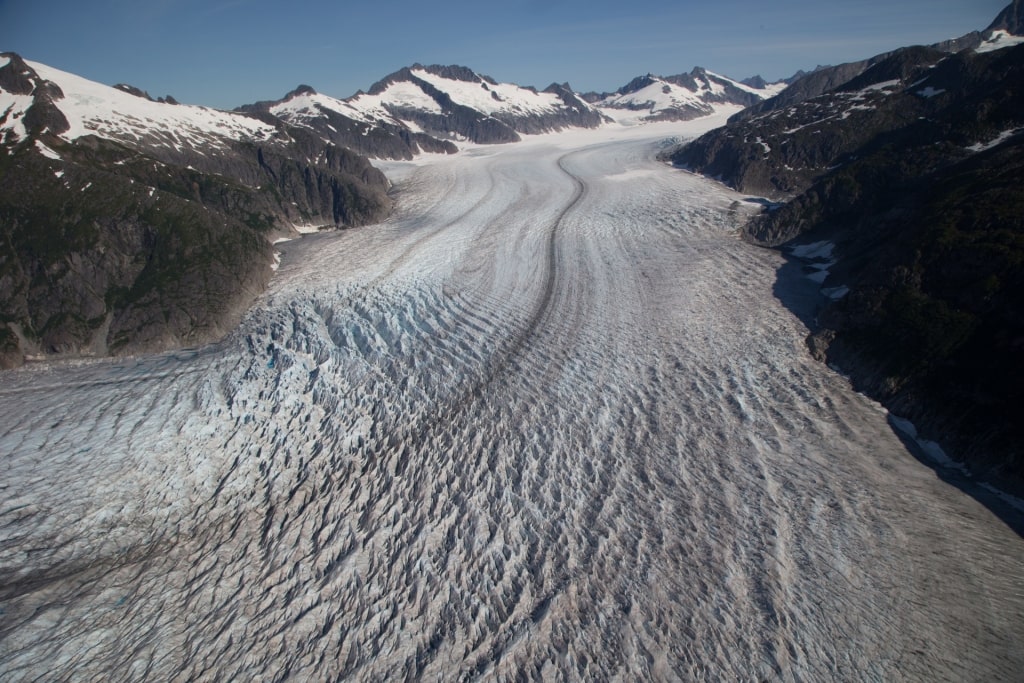
Mendenhall Glacier
Visiting Mendenhall glacier is one of the best things to do in Alaska, specifically because it’s easily accessible from downtown Juneau, the state’s capital city.
What this does mean, though, is that the trails around the glacier get busy in summer. Come in fall and you’ll have much more space to yourself to capture the perfect shot of the glacier in all its glory.
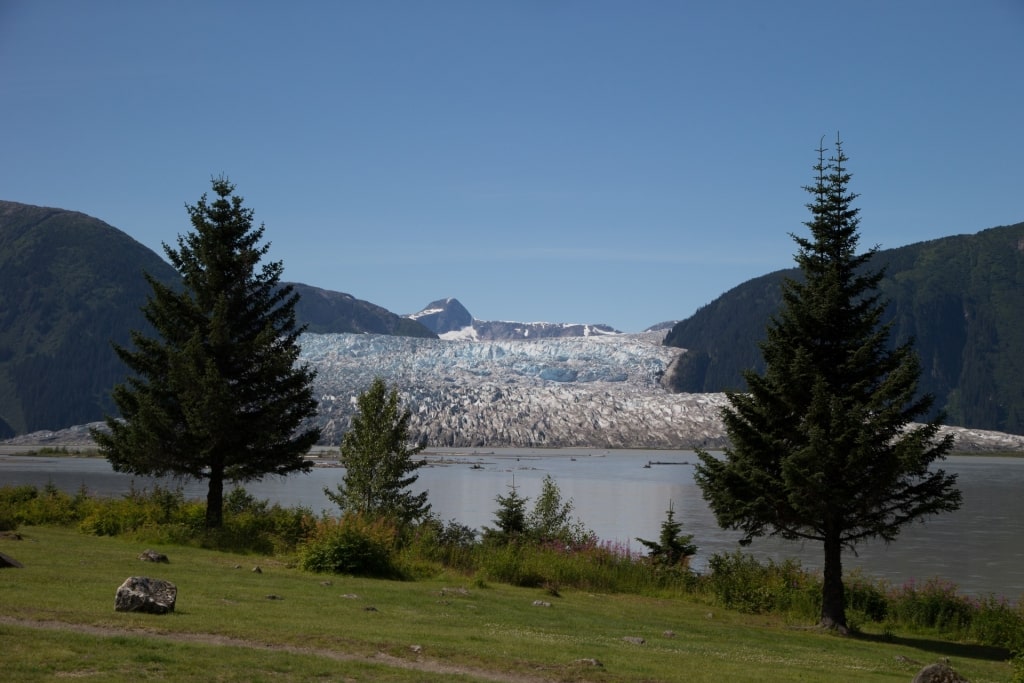
Mendenhall Glacier
The Mendenhall Glacier Visitor Center is the place to start, for informative displays that help you learn about this massive glacier’s icy flow as it slowly edges into Mendenhall Lake.
After your visit, set off on one of the marked trails to see the glacier from different angles. The Nugget Falls trail takes you to the foaming cascade of Nugget Falls, which plunges down a rock face near the glacier and will be stronger than ever if it’s swelled by autumnal rain.
Take the Yukon Route Railway To White Pass Summit
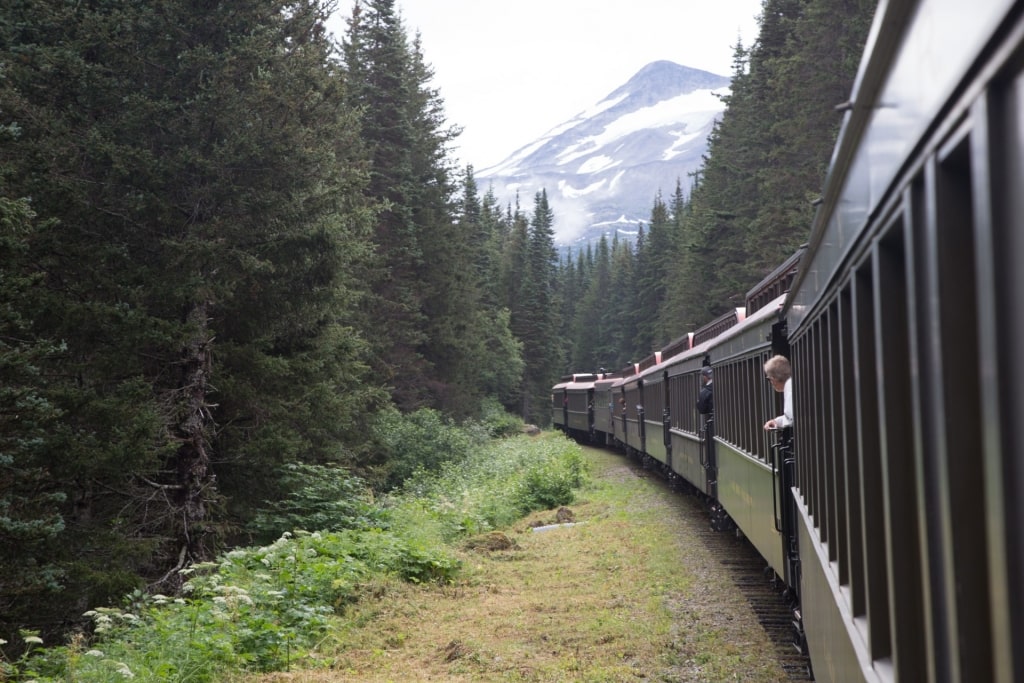
White Pass and Yukon Route Railway
Alaska’s fall season comes with many different kinds of adventures. One such adventure is by rail on the White Pass and Yukon Route Railway, heading from Skagway high into the mountains following the treacherous route employed during the Klondike Gold Rush, which brought gold fever to the region during the late 19th century.
A ride on the White Pass and Yukon Route Railway in autumn will offer you the chance to enjoy the transforming landscape, and the incredible display of fall colors.
This guided, narrated train journey loop will carry you up to the White Pass Summit, a picturesque mountain pass with glorious views of the adjacent snow-capped peaks and mountainous topography. The summit is 2,865 feet above sea level.
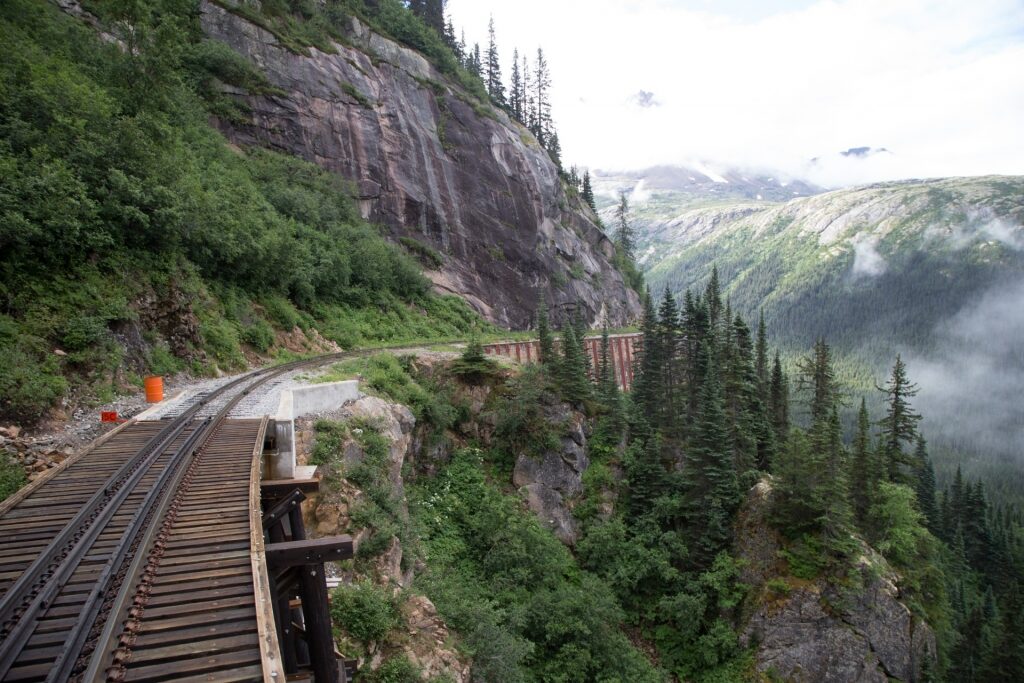
White Pass and Yukon Route Railway
As the train climbs higher and higher, imagine what life would have been like for the prospectors as the seasons changed.
Snow, rain, mud, and cold wind didn’t deter these hopefuls, and the railway had not yet been built at the peak of the Alaskan Gold Rush. Picturing the harsh conditions they endured is a sobering thought.
Read: Best Things to Do in Skagway
Admire Autumnal Scenes Along the Chilkoot Trail
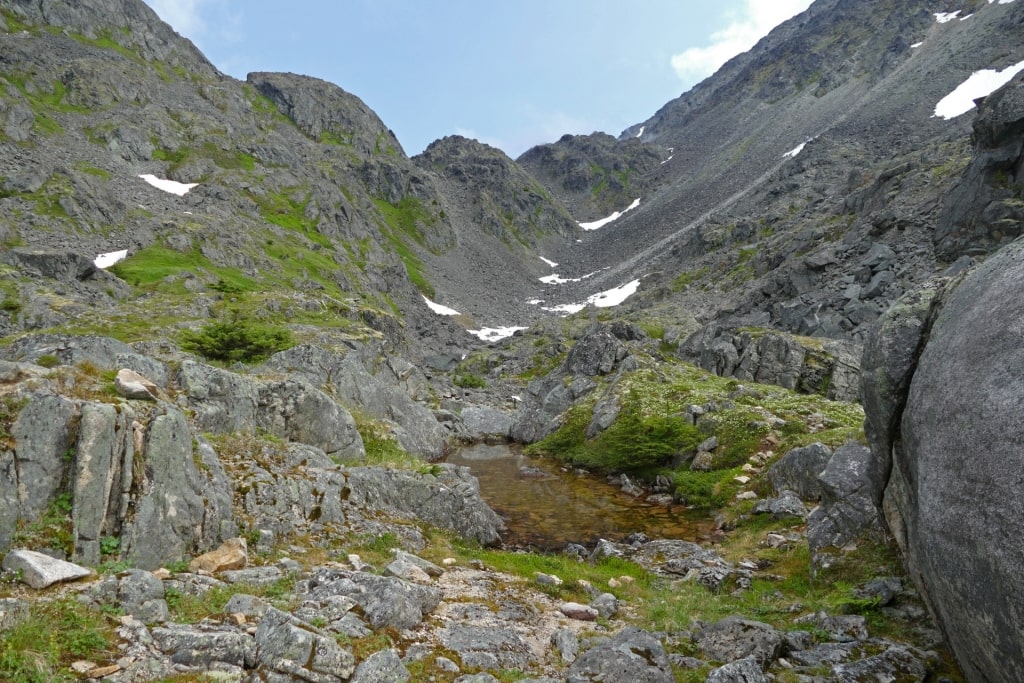
Chilkoot trail
To experience even more of the region’s “gold fever,” why not hike part of the historic Chilkoot Trail? This 33-mile trail traces one of the paths of the famed Klondike Gold Rush route.
And don’t worry if you don’t have enough time to tackle the entire track (that would take several days). You can opt for some limited day hikes near the abandoned ghost town of Dyea, north of Skagway.
One such hike is the The Chilkoot Trailhead to Finnegan’s Point section, coming in at about five miles in length (you don’t have to tackle the entire section if you’re short on time). Finnegan’s Point is actually the first campsite on the trail.
In the fall, this single track, located along the Taiya River, will provide you with some gorgeous scenery as you move through dense coastal forests populated with Sitka spruce, western hemlock, and other species.
Read: Best Places to Go Hiking in Alaska
Ramble Through Juneau’s Glacier Gardens Rainforest
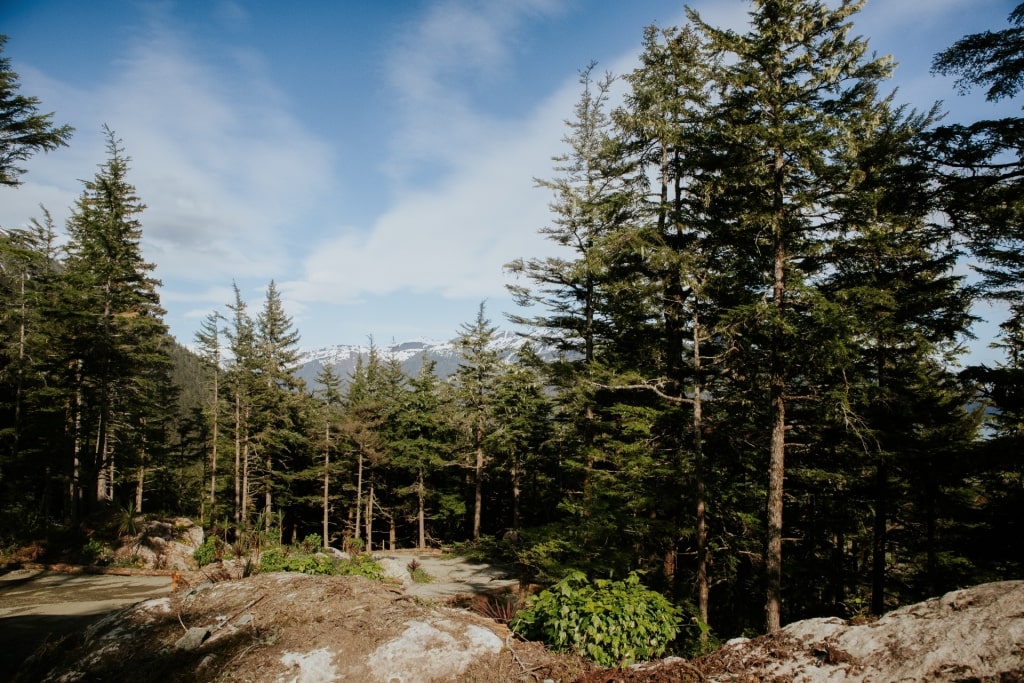
Glacier Gardens Rainforest
Fall in Alaska, and in Juneau, is an ideal time to go for a stroll through Juneau’s Glacier Gardens Rainforest.
Inside the Glacier Gardens Rainforest, you can check out the colorful hanging Flower Towers, which are inverted spruces with flowers growing out of natural “baskets.” In the cool, often misty weather of the Alaskan fall, these landscapes are especially atmospheric.
If you’re looking for an Alaskan adventure, Glacier Gardens Rainforest also puts on canopy tours that let you fly over the treetops on ziplines, enjoying spectacular views of the surrounding rainforest.
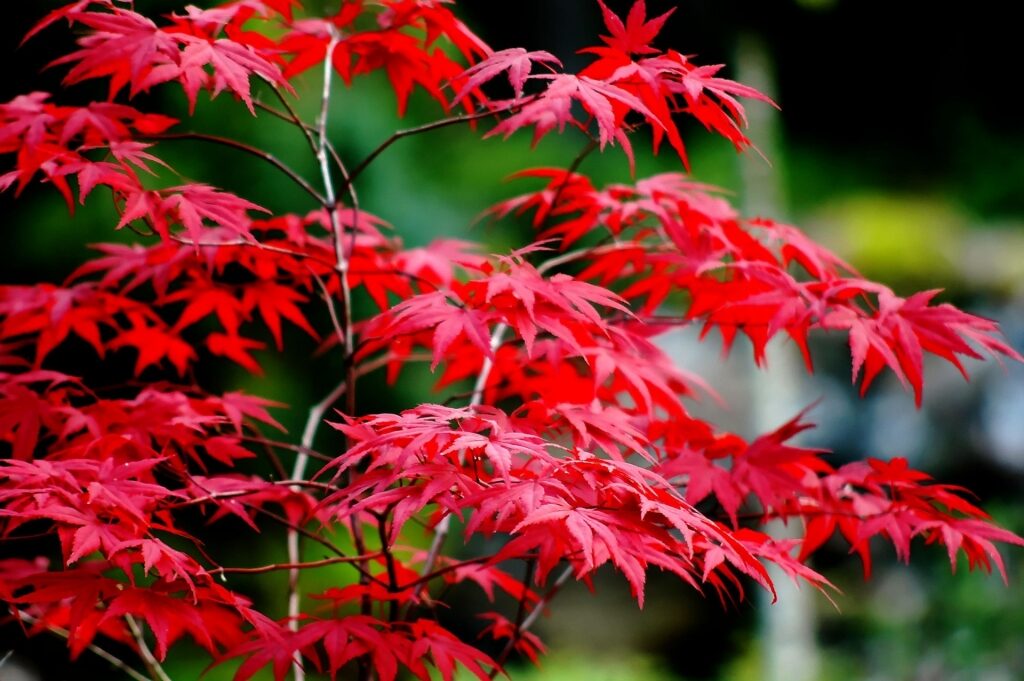
Glacier Gardens Rainforest
With lovely views over the mountain city of Juneau as well, these gardens, open through September, will offer you a lush, nature-based break.
Ride Juneau’s Mount Roberts Tramway
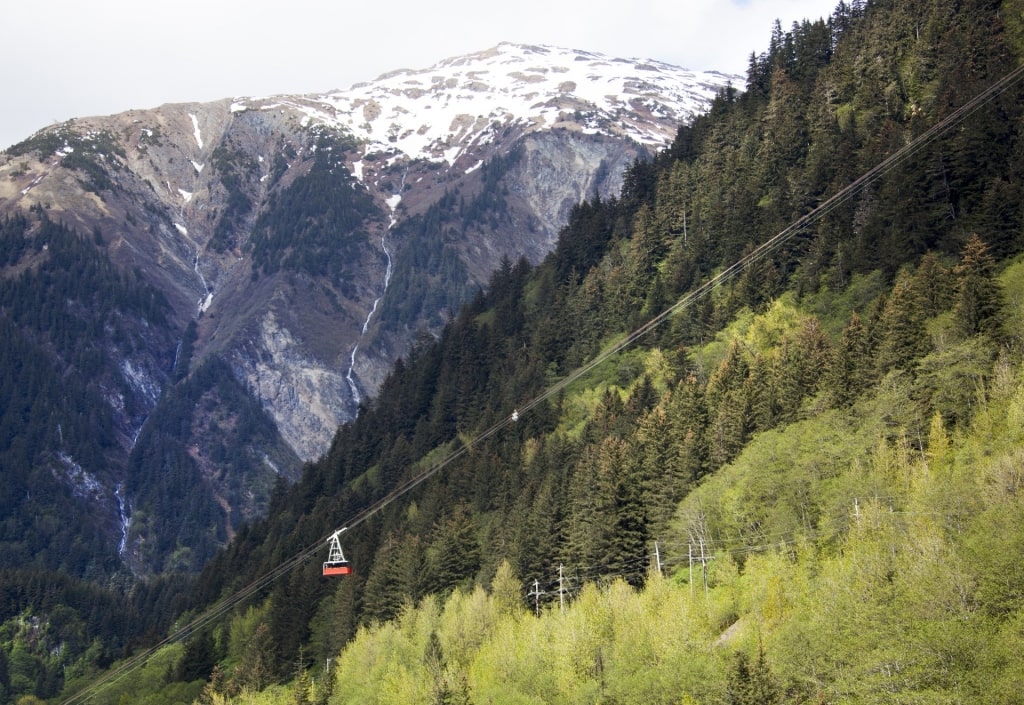
Mount Roberts Tramway
Fall in Alaska is a great time to hop on Juneau’s Mount Roberts Tramway for some outstanding views of the beautiful landscapes below.
The Mount Roberts Tramway, built in 1996, will take you up along a steep slope to the top of Mount Roberts, with panoramic vistas of Juneau, and the picturesque Gastineau Channel far below.
Once you reach the summit, you can wander around the Mount Roberts Nature Center, or head off for a hilltop hike through the woodlands, the trees sporting their glorious autumnal shades.
If you’re hungry, you’ll also find a restaurant at the summit where you can dine on crab, fresh seafood, and other local fare—accompanied by the most spectacular views in town.
Learn About Nature at Icy Strait Point
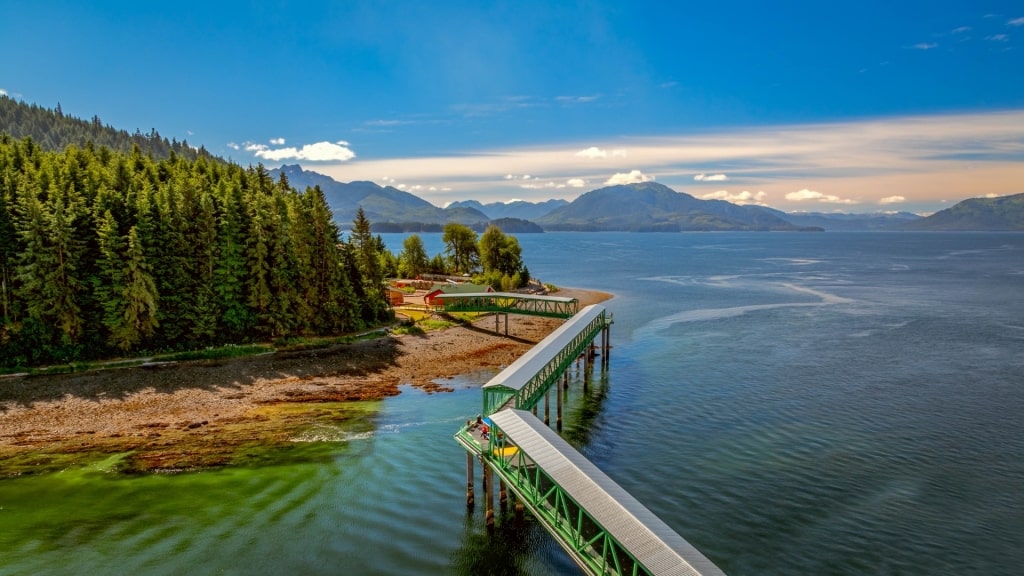
Icy Strait Point
Autumn on Chichagof Island, where Icy Strait Point is located, means you’ll be treated to lovely fall foliage color changes. Fall also brings the final salmon runs, which in turn attracts bears and bald eagles.
There are still humpback whales to be spotted in the nutrient-rich waters around Chichagof Island, too, before they migrate at the end of September.
Fall is an especially good time to learn about the deep connection felt by the local Tlingit people to the land. Join a hike to the Spasski River Valley, one of the best places to see bears in Alaska, where you could see them picking off the last salmon of the season.
Your Tlingit guide will tell you about edible fungi, and the many species of berries the locals forage. The Tlingit use plants for medicinal purposes, too, and have endless fascinating stories about nature’s many cures.
See Bears Preparing to Hibernate
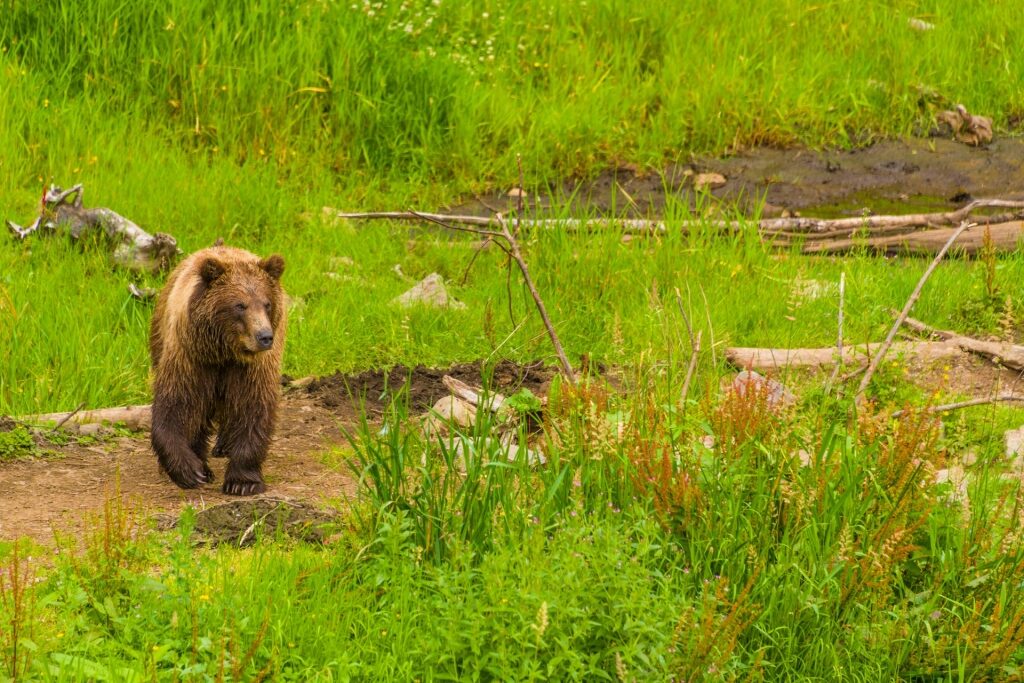
Fortress of the Bear, Sitka
The Fortress of the Bear in Sitka is a brilliant nonprofit rescue facility founded in 2003 and focused on rehabilitating orphaned and injured bears, particularly black bears and the endangered Alaskan coastal brown bears.
In addition to serving as a sanctuary, this facility also promotes bear conservation through public education.
If you pay the Fortress of the Bear a visit before the resident bears prepare to hibernate for winter, you can observe these apex predators up close in spacious enclosures that mimic—to a large degree—their natural habitats.
Each bear has a choice of shelters, made from sticks and logs, and each one will line its den with straw, leaves, and other materials. When the time comes, the bears will retreat to their dens and stay there for the best part of five months.
Visit Sitka National Historical Park
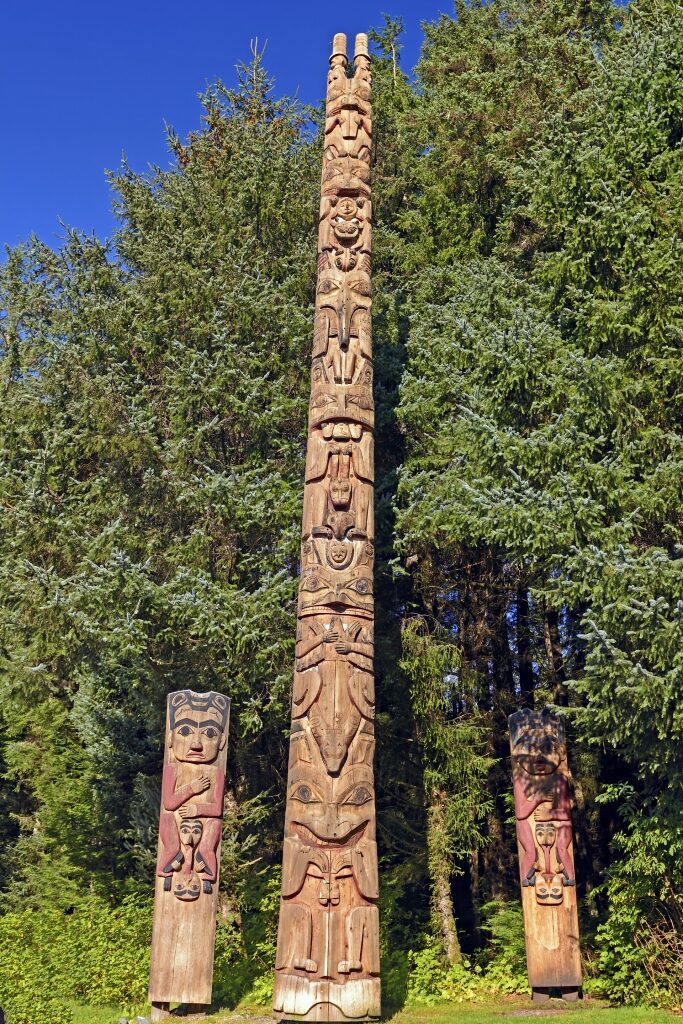
Sitka National Historical Park
One of the best things to do in Sitka is to visit the Sitka National Historical Park, a place where you can learn more about Tlingit traditions, as well as how the Tlingit fought invading Russians at the Battle of Sitka in 1804.
During the battle, the Tlingit aggressively defended their fort but were eventually overcome by the Russians’ superior armaments, resulting in the fort’s capture.
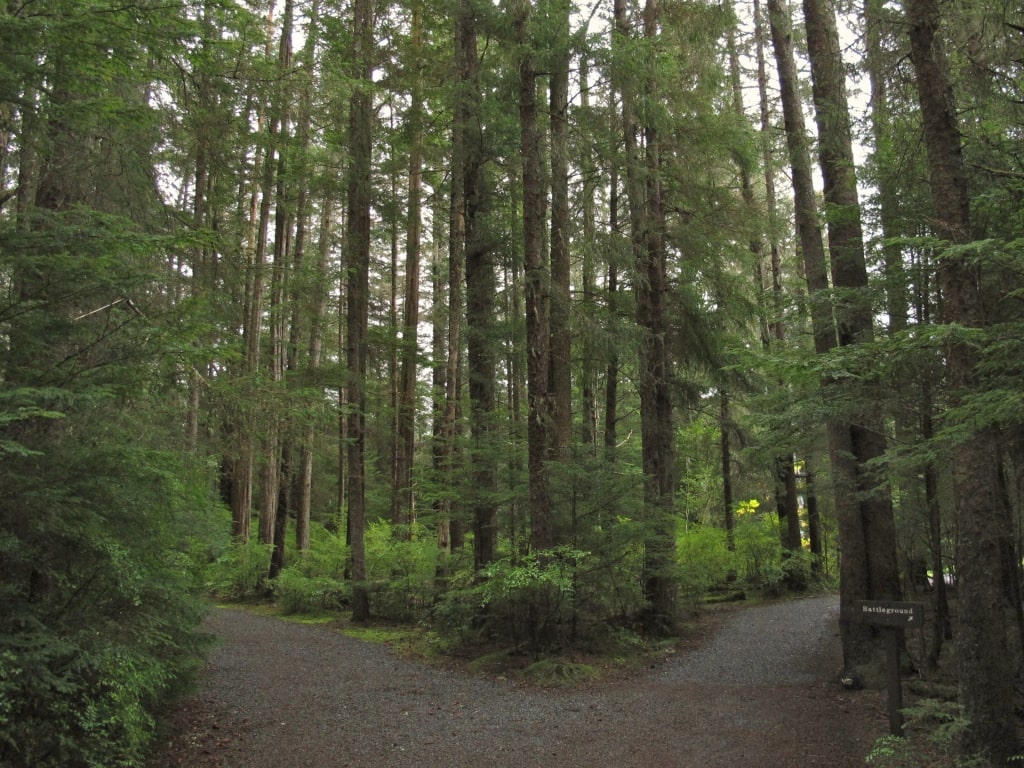
Sitka National Historical Park
Today, the park, with its forested coastal walking paths and a large collection of totem poles, commemorates this conflict.
Fall in the park is a chance for you to enjoy the changing colors of the area’s woodlands, which are thick with Sitka spruce and western hemlock, as well as some red alder. You might also spot bears that have come to feed on the fall salmon river runs.
Milder temperatures and fewer visitors during the autumn will let you comfortably explore the nearby forest trails in tranquility.
The park also offers education programs, and highlights different aspects of Tlingit and Russian cultural heritage, along with the long-term effects of colonization on indigenous communities.
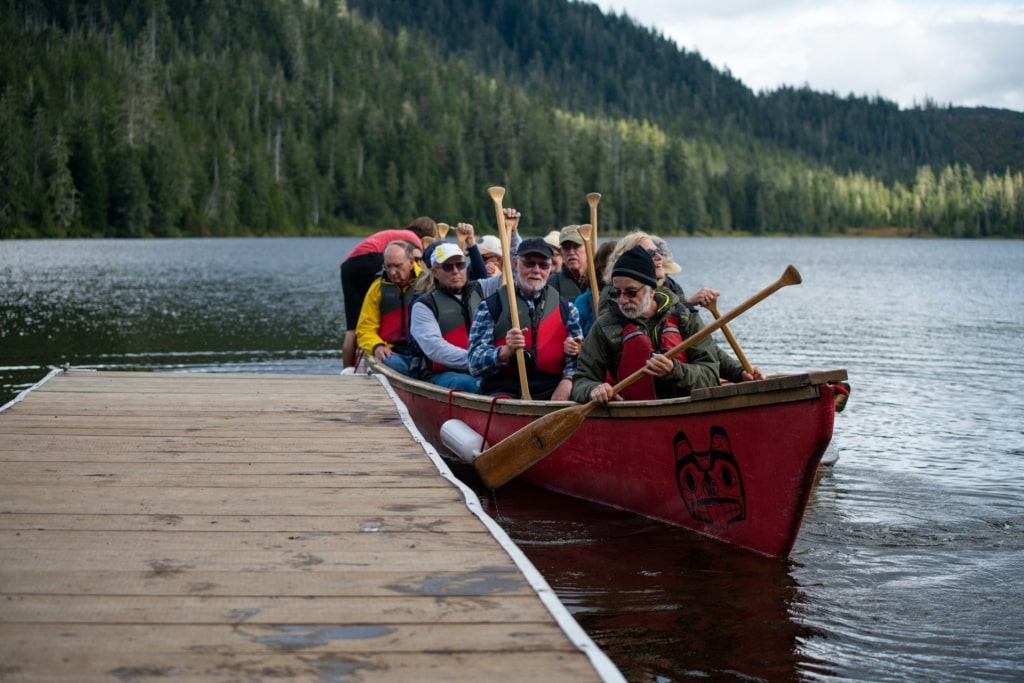
Ketchikan
Fall in Alaska is a brilliant time to get to know the 49th state. Browse our cruises to Alaska and experience the region’s wildlife, rugged landscapes, fascinating indigenous cultures, and history.
